WHY GO: Staunton VA (pronounced like “stand ton”), is best known as hometown of President Woodrow Wilson and as the rather unlikely setting for the American Shakespeare Center. But the Queen City of the Shenandoah Valley will also delight those with any interest in design or architecture.
Most of the diverse structures lining downtown Staunton Virginia streets, fashioned by the same “Pattern Book” fan and architect, TJ Collins, between 1890 and 1911, have been restored to their original beauty.
Enjoy an innovative, sophisticated dining scene. Check out an intriguing New World living history museum. And stay at an Historic Hotel to round out this surprisingly romantic, immersive, and cultural getaway, just minutes from the Blue Ridge Parkway.
Visiting Staunton VA is on our list of 20 Surprisingly Romantic Getaways in VA. Check it out if you wish to explore the state further.
Looking for someplace dreamy outside of Virginia? Check out our 150 Best Romantic Getaways in the Northeast US (Virginia to Maine).
Things to Do in Staunton VA
TOUR/THEATER: Blackfriars Theater, Home of the American Shakespeare Center
Shakespeare had much to say about love. So, if you agree that The sight of lovers feedeth those in love, then get thee to the Blackfriars Playhouse post haste.
Arrange for a backstage tour of the “World’s only recreation of Shakespeare’s indoor theater,” Blackfriars Playhouse. I promise, it will be a highlight of your stay in Staunton. Even if you don’t catch a professionally mounted show there.
Like the “Let’s put on a show in our backyard barn!” scenes from Judy Garland/Mickey Rooney movies, Staunton’s Blackfriars Theater sprang from a gun-ho, grassroots movement.
Spearheaded by Jim Warren and James Madison University Professor, Dr. Ralph Alan Cohen, a JMU production of King Henry V in 1987 was the impetus to build this permanent theater in 2001.
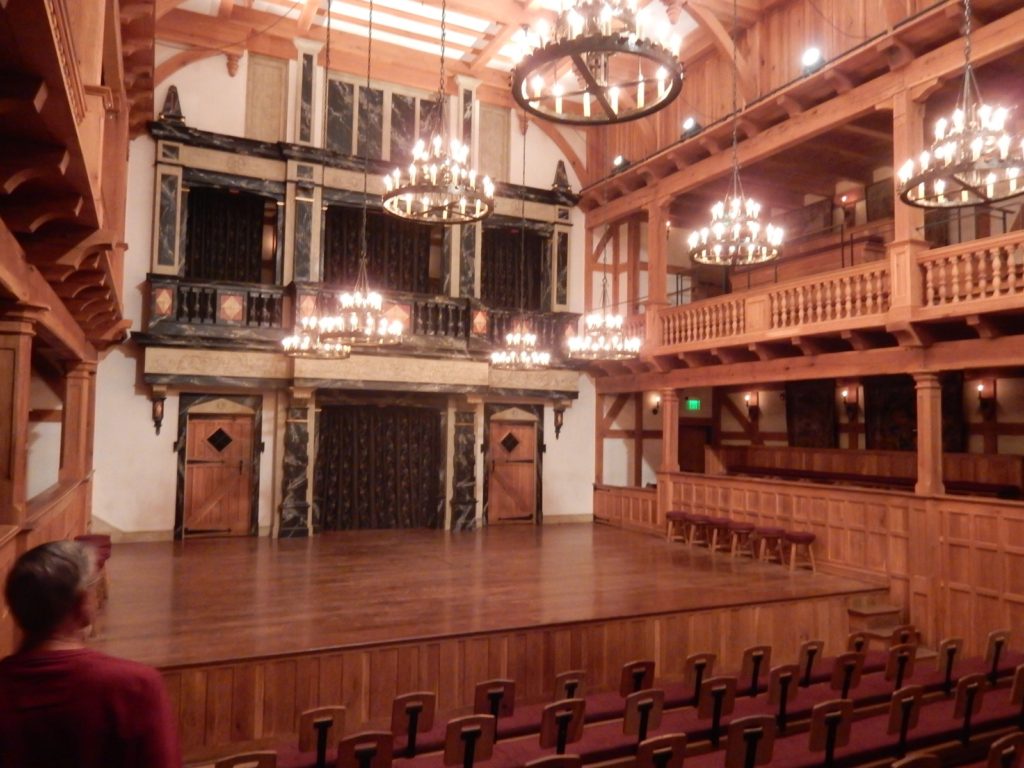
A plaque in the lobby identifies the “Original sharers of Lord Chamberlain’s Men” – the financial backers of Shakespeare’s plays in 1590. Apparently, the arts have required funding and patrons from the very start.
Backstage Tour
The tour continues into the Elizabethan theater, and then onto the boards, where we’re informed of Shakespeare’s “staging conditions.” Some, but not all of these, are followed today.
Yes, the theater company now includes women, not young men to play girl parts. And the stools for patrons must keep to the sides of the stage, whereas elite theatergoers in the 1500’s could sit in the center of the action.
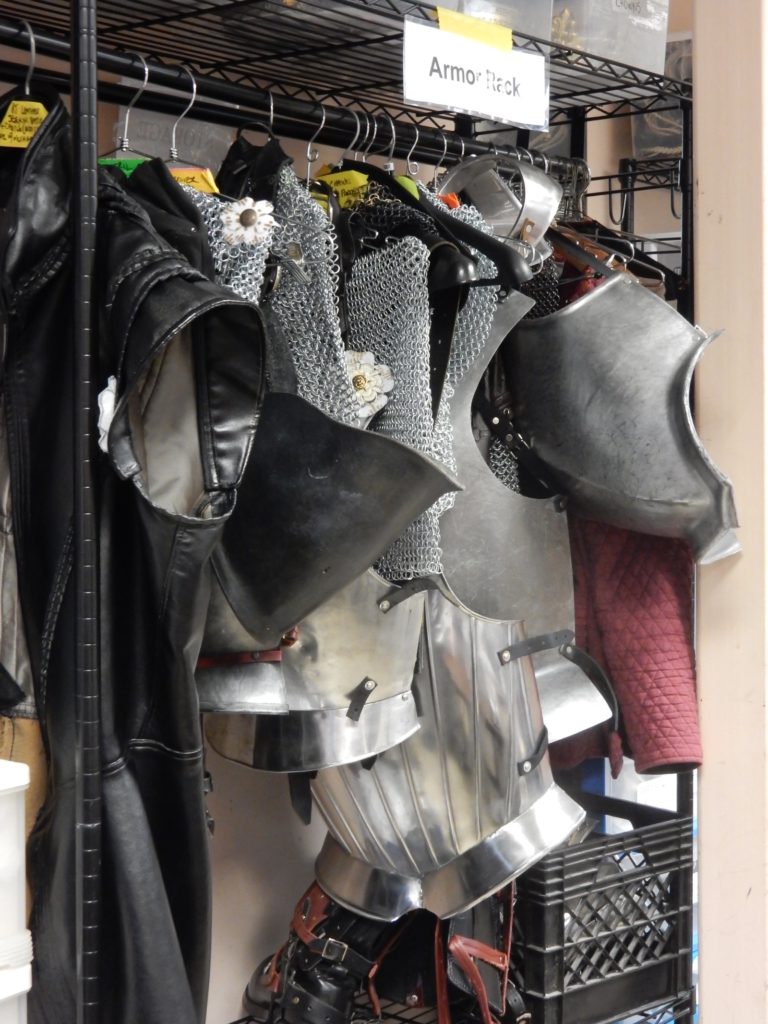
But, just as it did originally, the houselights stay on during each performance. And gods still descend from a trap door in the ceiling, while demons, ghosts and supernatural characters emerge from a hidden door on the stage floor.
Shakespeare was quite au-courant and would have used the contemporary music of his day in his plays. So these days, pop and rock rule.
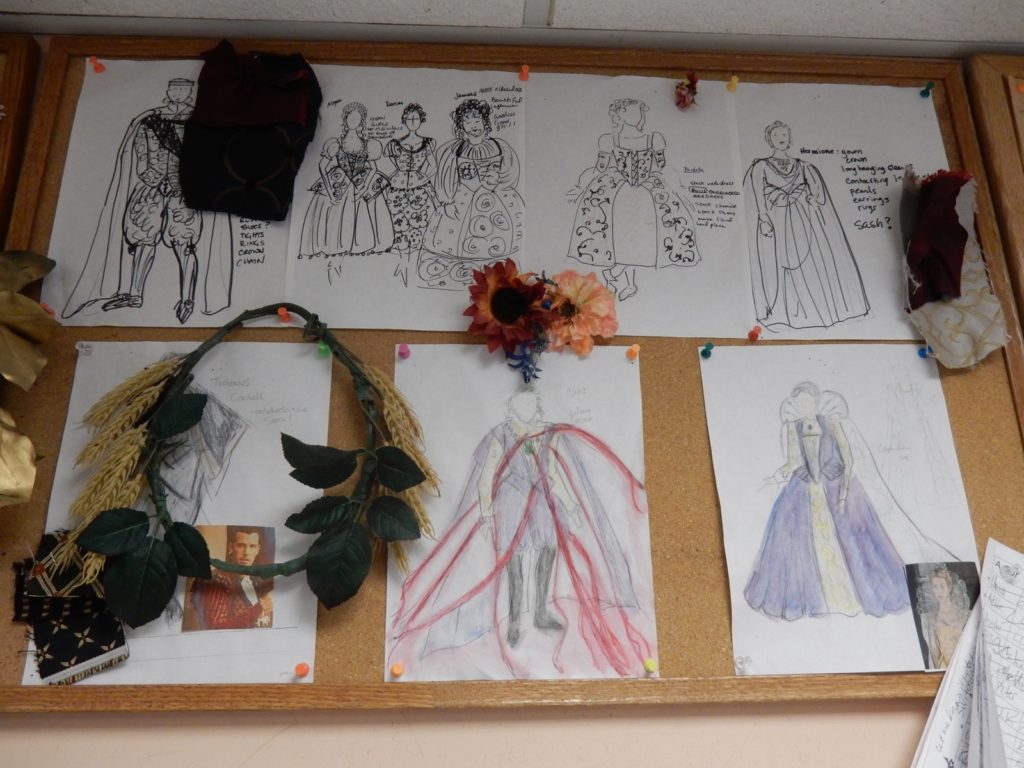
Next, it’s behind the curtains and then downstairs to learn about the guts and workings of this impressive organization.
Costumes and props – swords, chainmail, and the occasional severed head – are stowed in a small room after being “sourced from heaven.” Heaven, in this case, is a much larger space, containing thousands of costumes, on the top floor.
You’ll learn about how show directors dealt with – and still handle – the buckets of blood required for a typical Shakespearian tragedy, as costumes were very expensive (think, creative use of red ribbons).
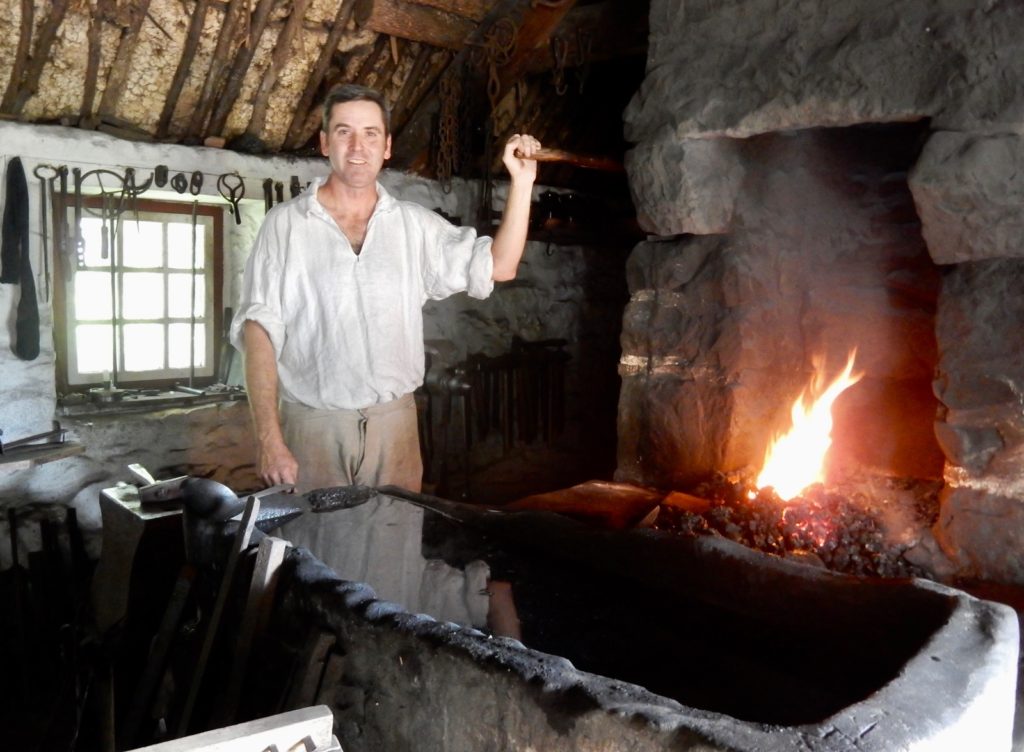
TOUR: Frontier Culture Museum
Fans of open air living history museums staffed by costumed interpreters take heed: The Frontier Culture Museum, in Staunton, is one of the best in the country.
You’ll need a car to get here, as it’s about 2 miles from downtown. But it’s well worth at least a few hours to be immersed in the lives of those who came to the New World in the 17th and 18th centuries.
The outdoor museum is divided into two parts. The Old World section illuminates the cultures that immigrated here. The American section juxtaposes a 1740 settlement with a 1850’s home, schoolhouse and church.
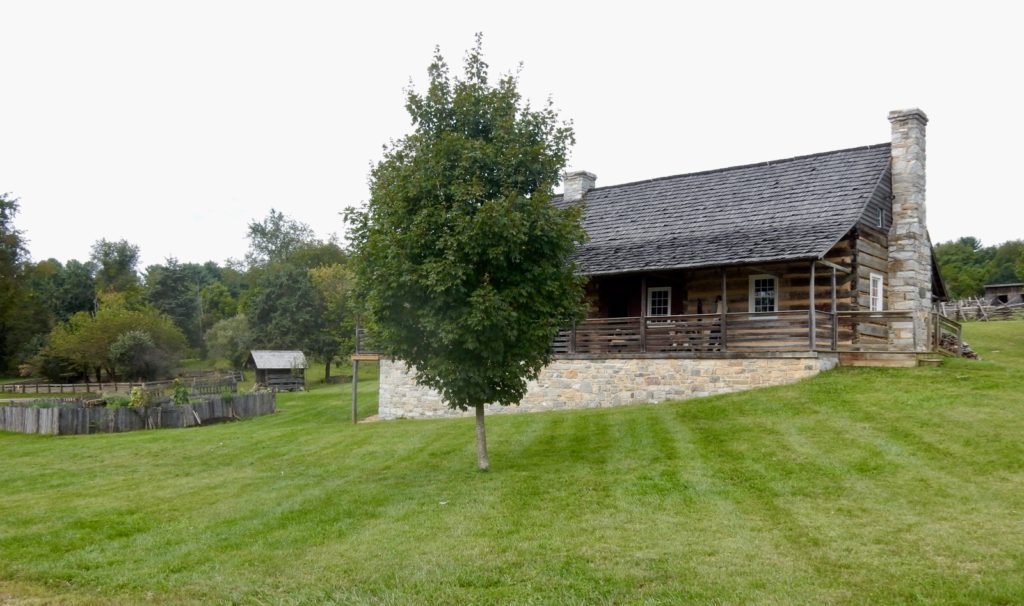
A succession of homesteads along a mile-long dirt road represent farms from the mid-1600’s until the mid-1800’s. Study the lifeways from West Africa, England, Germany, Ireland, and Native American, and how they influenced our melded culture today.
During that era, Europeans settled in the New World, interacted with the indigenous people, and influenced each other, sharing tools and knowledge.
Most of the Old World structures (except for the African and Native American farms) were transported from Europe and reconstructed here. The Frontier Culture Museum is uniquely compelling because each pedigreed farmhouse illuminates the forces in the Old Country to drive immigration here.
West African Farm
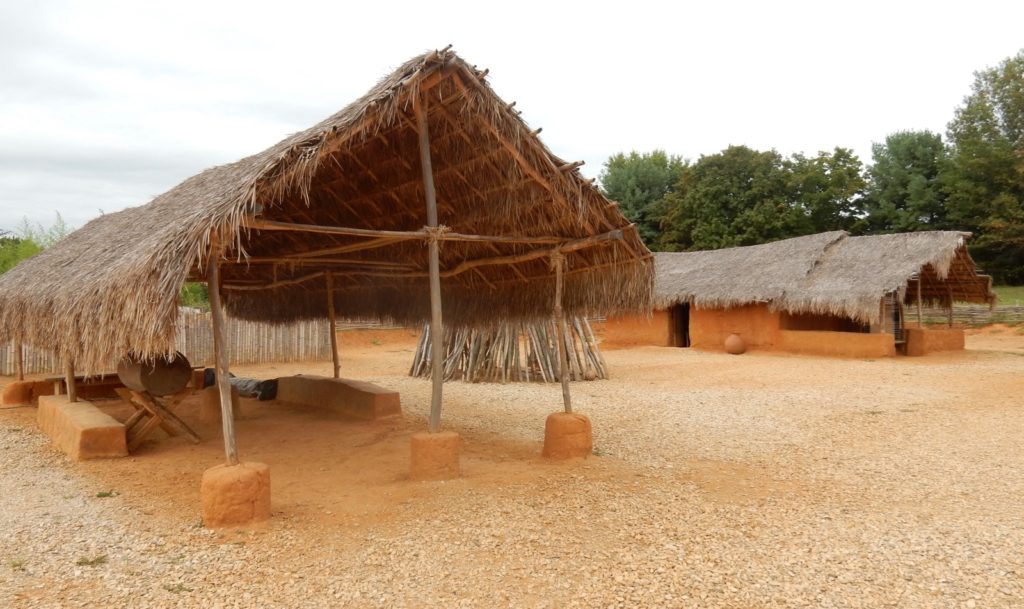
The West African Farm represents what the Igbo Tribe from Nigeria were forced to leave behind in the 1740’s, when they were captured and enslaved here. (40% of Africans brought to the New World were Igbo). Igbo mixed earthen clay for the thatched huts by foot so that builders could feel the consistency of the mud. The Igbo brought okra, black-eyed peas and yams, which became the basis for Southern cooking.
The English Farmhouse
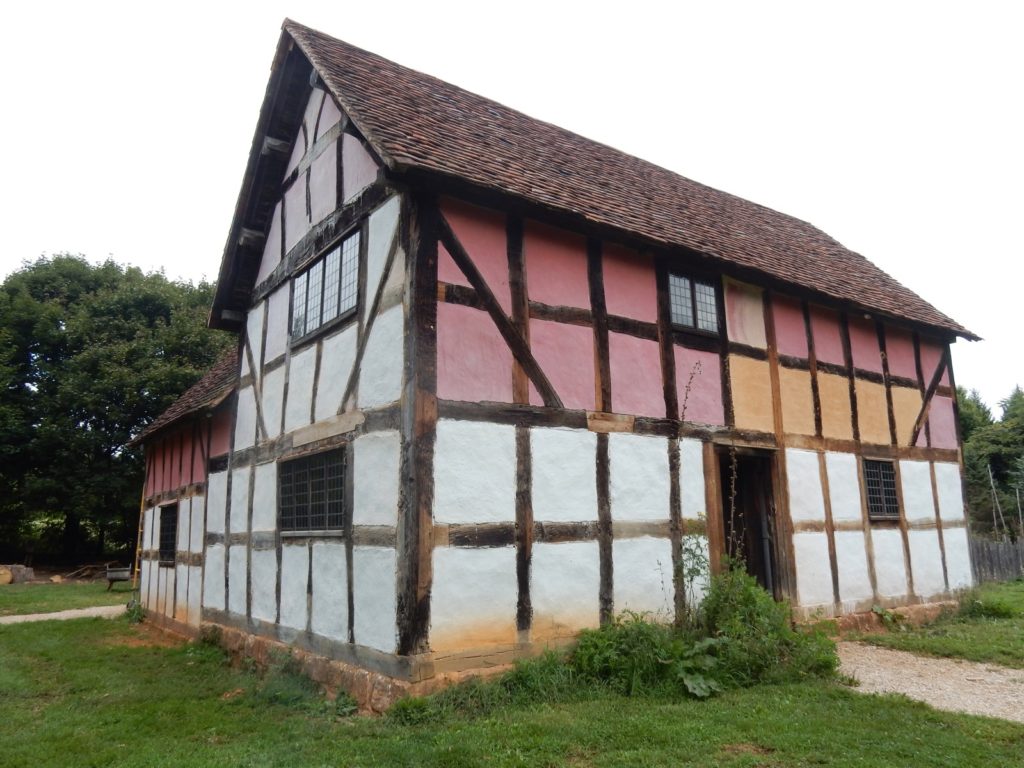
This English Farmhouse from Hartlebury, England dates back to 1631 (though the chimney was built in 1692). Crouch inside low-ceiling rooms to find reproductions of furniture authenticated by a detailed inventory recorded by the family that lived in this very home.
This property belonged to a Yeoman– a man considered a member of the “top of the working or good middling class.” Of the 350,000 Englishmen who arrived on these shores from 1600-1700, one quarter paid for passage. (Others were indentured servants). Thus, they were eligible to purchase land.
Sixty acres of property, encompassing this 10 room “wattle and daub” home, would have employed over a dozen field and dairy workers.
Irish Farmstead
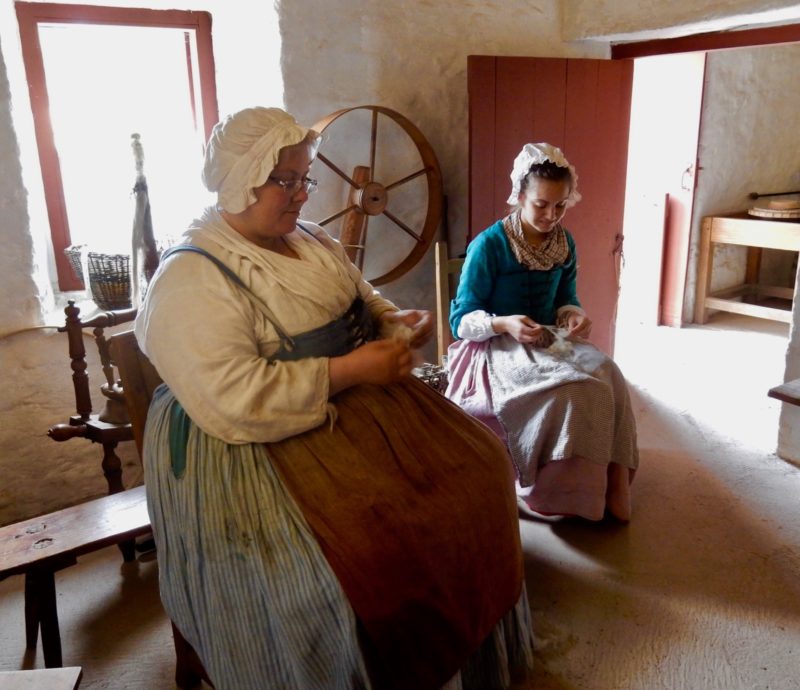
Watch the linen-clad blacksmith hammer out hardware for buildings, and kitchen tools in the working 1700’s Irish Forge.
At the nearby whitewashed thatched Irish Farmstead, originally from County Tyrone in the Ulster Region, women do the hard work of making linen. First extracting fiber from flax plants, then spinning and weaving. During the 1700’s – rocky years in County Tyrone’s linen industry, a good number of Irish natives sought better opportunities in the New World.
German Farmhouse
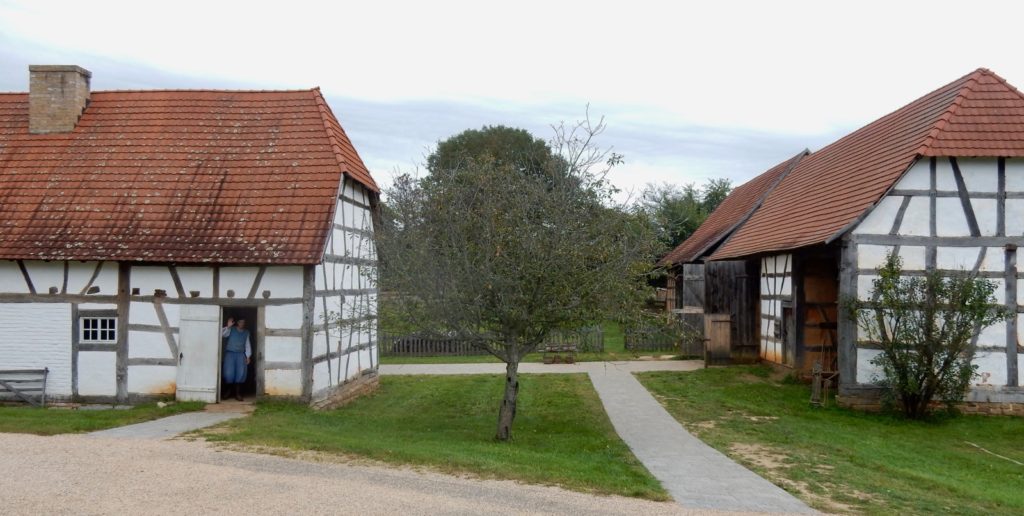
The German Farmhouse built in Horat, Germany in 1688, features a “stuba” – a kind of living room. Much like our game rooms today, these were stocked with musical instruments and strategy and gambling games that fostered critical thinking about the inevitable vicissitudes of farm life. These were important lessons on the frontier.
The Museum also encompasses the 1869 Mt. Tabor Church – one of the first African American churches, most likely built by slaves or by the emancipated generation. The Frontier Culture Museum has expansion plans, as well, with a Gristmill and working Artisan Village in the offing.
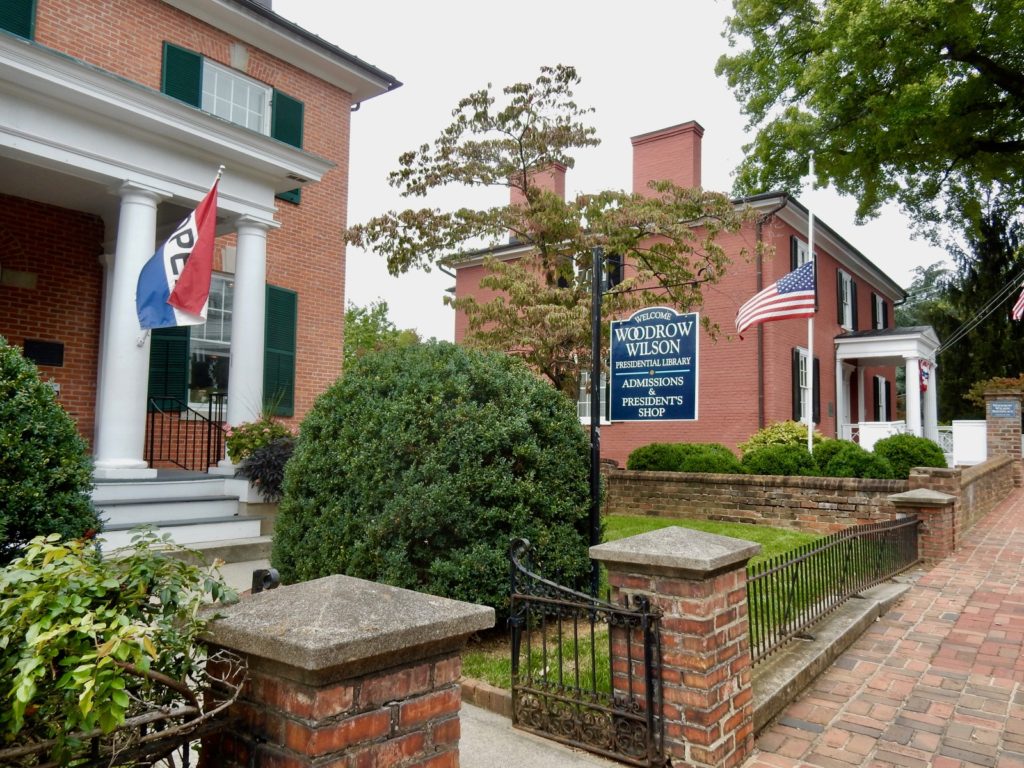
TOUR: Woodrow Wilson Home, Museum and Library
Born here on December 28th, 1856, President Woodrow Wilson would make his very last visit to his home on his 56th birthday, a few days before his inauguration.
By age 39, Wilson had his first stroke. He suffered two more after moving into the White House, and was very sick during the last 18 months of his presidency. Some credit his wife, Edith, with running the country at this time.
Despite his disabilities and illness, Wilson presided over our nation during the first World War, and the Spanish Flu epidemic of 1918. He established the Federal Reserve and Federal Trade Commission. And just by happenstance, was in office for the passage of the 19th Amendment – the Women’s Right To Vote Act of 1920. Wilson acquiesced to the 19th, only “after some arm-twisting from his wife.”
Wilson was a proud Virginian, who claimed that “a man’s rootage is more important than his leafage.” Plan on at least 1 ½ hours to tour the Woodrow Wilson Presidential Library and home (renovated in the 1930’s to appear as if the Wilsons still live there), a self guided tour of the Museum, and to peruse the gift-shop.
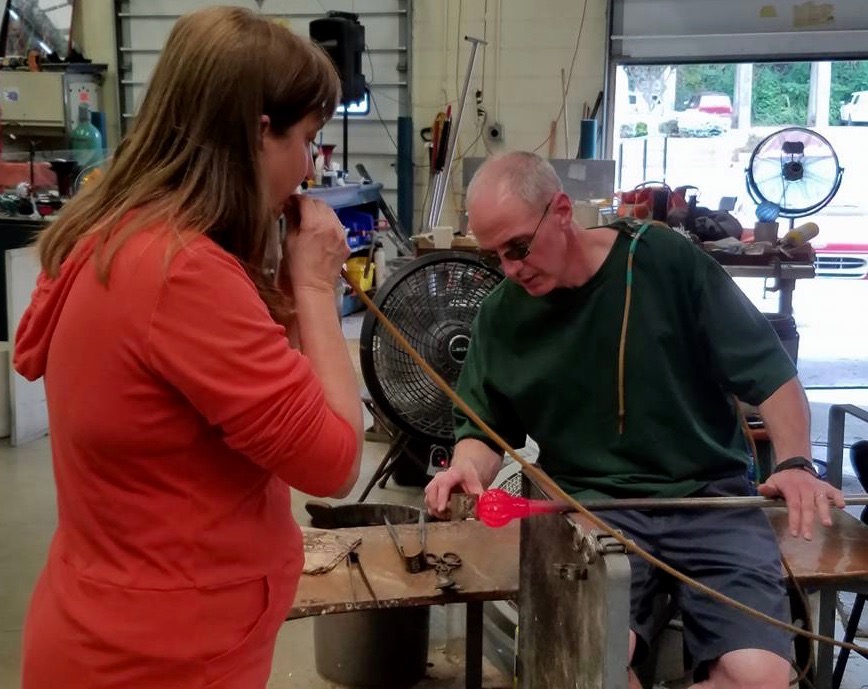
MAKE/SHOP: Sunspots Studios
Ever wonder what it’s like to get off the viewing stand and help a professional glassblower with his craft? This is your chance – at Sunspots Studios – and it’s lots of fun.
Though your role in the activity is small (choose from an assortment of vibrant colors and then blow air into a rubber tube to inflate a teardrop of molten glass while the artisan shapes it), you’re right where the action is. Plus, you can take “your” creation home the next day after it’s had time to cool.
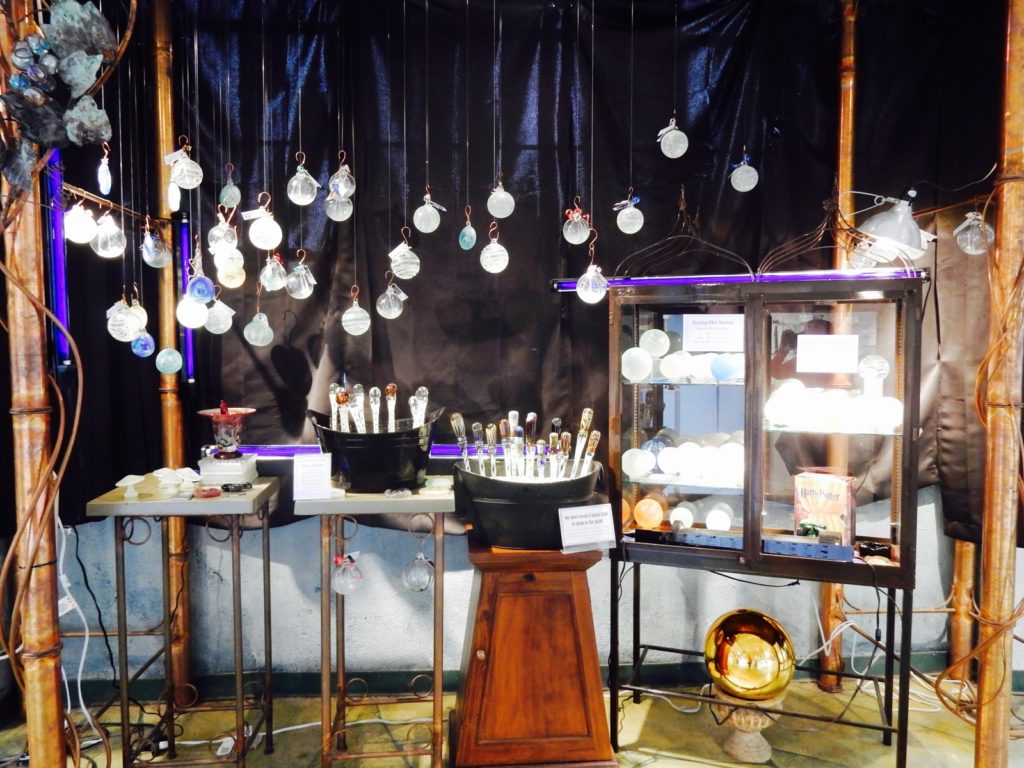
Sunspots’ owners, Doug and Caroline Sheridan, opened this space in 2000 as a lovely glasswork gallery, adding the Studio a year later. Now, even if you do not participate in the making, you can still take home a gorgeous hand-blown piece of art.
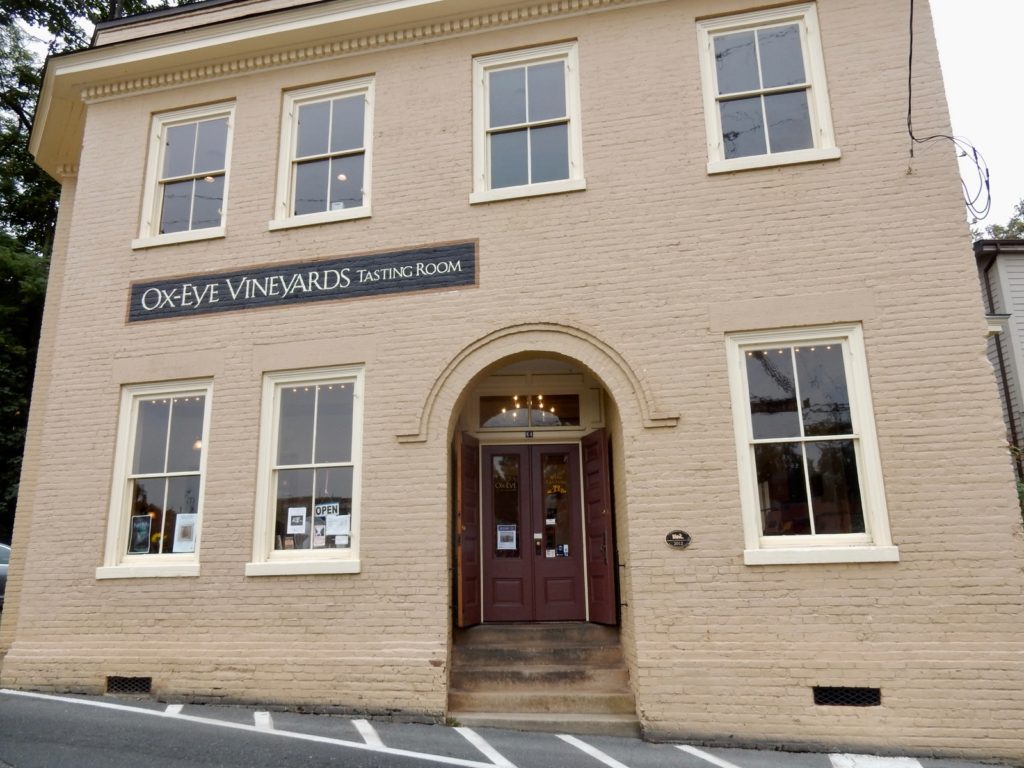
TASTE: Ox Eye Vineyards Tasting Room
You’ll find this modest tasting room directly across the street from Sunspot Glassblowers. Ox Eye Vineyards began as grape growers for other wineries in the area – a region known for cool-climate varieties. Ox Eye’s grapes are grown “in the mountains” and thus produce fantastic Riesling, Cabernet Franc, Pinot Noir, and other dry varietals.
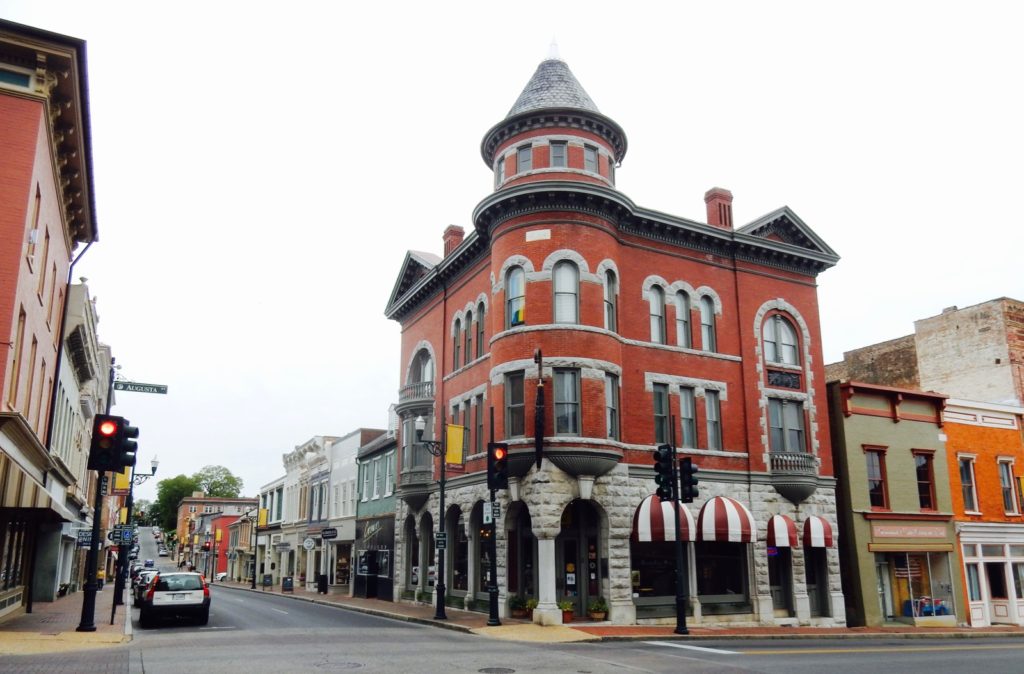
WALK/ARCHITECTURE: Historic Downtown Staunton VA
Once on the edge of the American frontier, in the foothills of the Blue Ridge Mountains, the Virginia Central Railroad changed everything: Staunton became “a rockin’ place” post Civil War.
By the late 19th century, it was the perfect canvas for architect TJ Collins who was enamored by Classical Pattern Books from Europe. Collins designed over 200 buildings – no two alike – in a timeline of styles from Greek, Roman, Moorish, Gothic, Renaissance, Victorian, and other “patterns” from all over the world.
Now, boutiques, galleries, antique emporiums, and celebrated restaurants are attracting a growing number of visitors. But for architecture fans, a stroll down Beverley Street and its offshoots is a feast for the eyes.
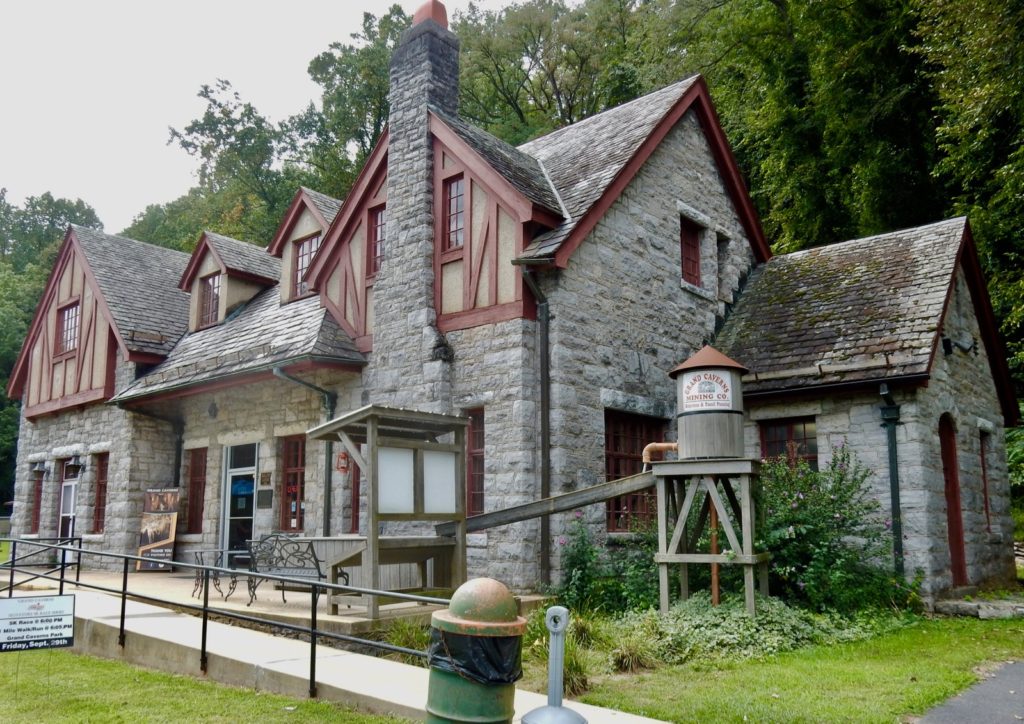
TOUR: Grand Caverns, Grottoes
Grand Caverns, “The oldest Show Cave in America,” has been offering tours consistently since 1806. Unbelievably, it was even a popular tourist attraction for Civil War soldiers on break.
During the Victorian-era, intrepid curiosity seekers used candle-light to crawl and climb though the caverns. It took over eight hours to cover the same ground that the modern visitor traverses in just over a hour.
Surprisingly, with all this past fame, hardly anyone outside of the area knows about this cave system. That’s because it’s far from I-81, and 20 miles from Staunton. That’s a big shame, and there are several reasons why everyone should visit.
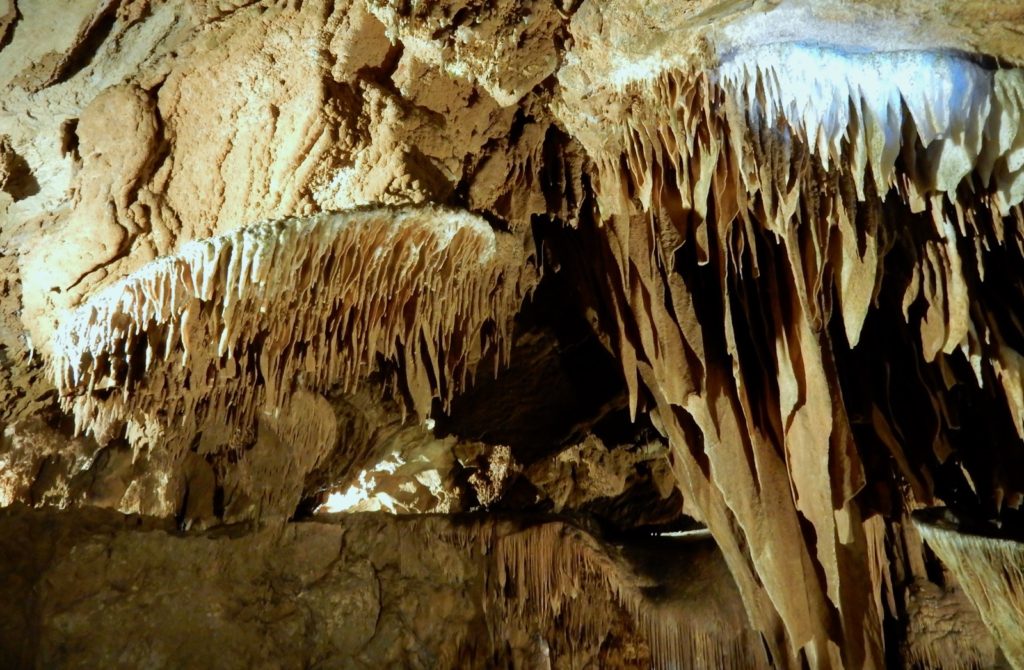
First of all, it’s owned by the people. The Town of Grottoes, population 2,500, acquired it when the Upper Valley Regional Park Authority was dissolved and gifted the attraction to the town.
Secondly, most caves have horizontal bedrock, but the underlying rock here is vertical. Last, and most importantly, there are more “Shield Formations” here than in any cave in the country.
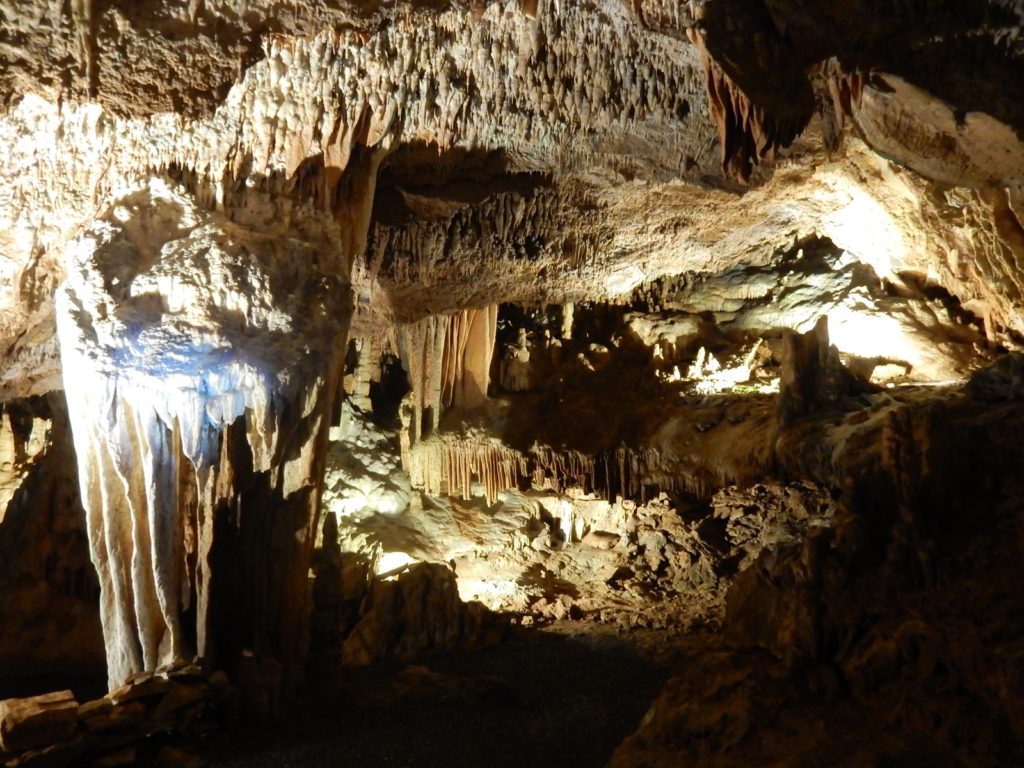
Most cave systems have one, if any, such structure. “Shields” are that rare. However, Grand Caverns features over 200 of these thin round disc formations. Their unusual horizontal growth is still a mystery to scientists.
Named a National Natural Landmark by the Secretary of the Interior, Grand Caverns attracts 40,000 visitors a year for its 70-minute 1.5-mile tours. It’s well worth a drive from anywhere.
Restaurants in Staunton VA
EAT: Zynodoa
This innovative Southern-Cuisine restaurant wouldn’t look out of place in, say, Manhattan, with its dramatic back-lit bar and dark grey walls peppered with vividly colored art. But Zynodoa has earned its cornpone-chic reputation as a destination restaurant in small-town Virginia.
Naturally, there’s Cast Iron Cornbread, but Zynodoa’s version, a caramelized disc of sweet cake topped with a film of crunchy sugar – a Bluegrass Crème Brulee, if you will – is a danger to all dieters.
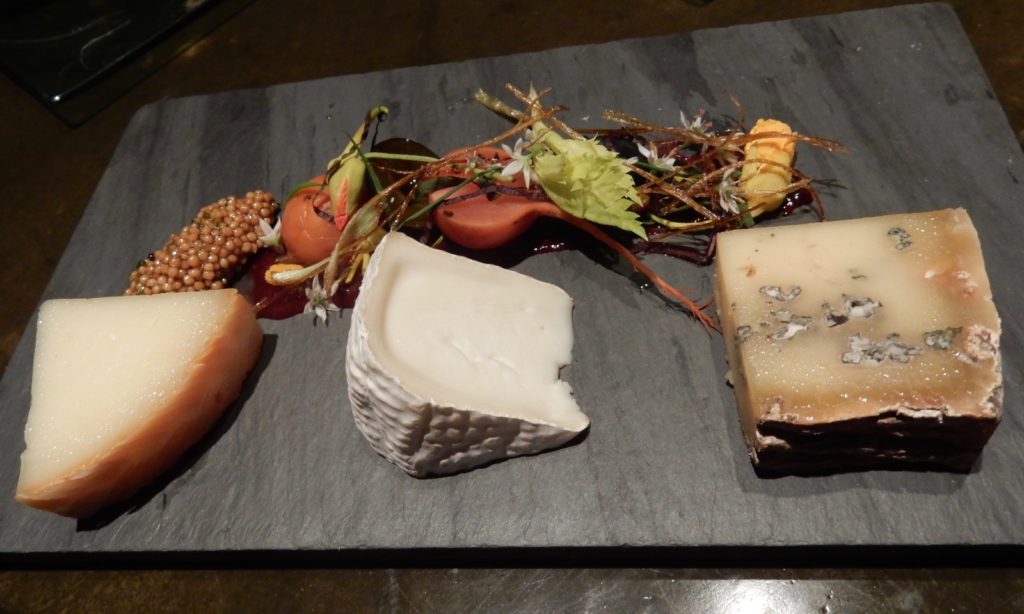
Menu items, including the thoughtful cheese assortment presented on a slate slab, are beautifully plated. And dishes like Polyface Farm Chicken prove that the chef has skillful ways with even the most comfortable of comfort food ingredients. Most are sourced locally.
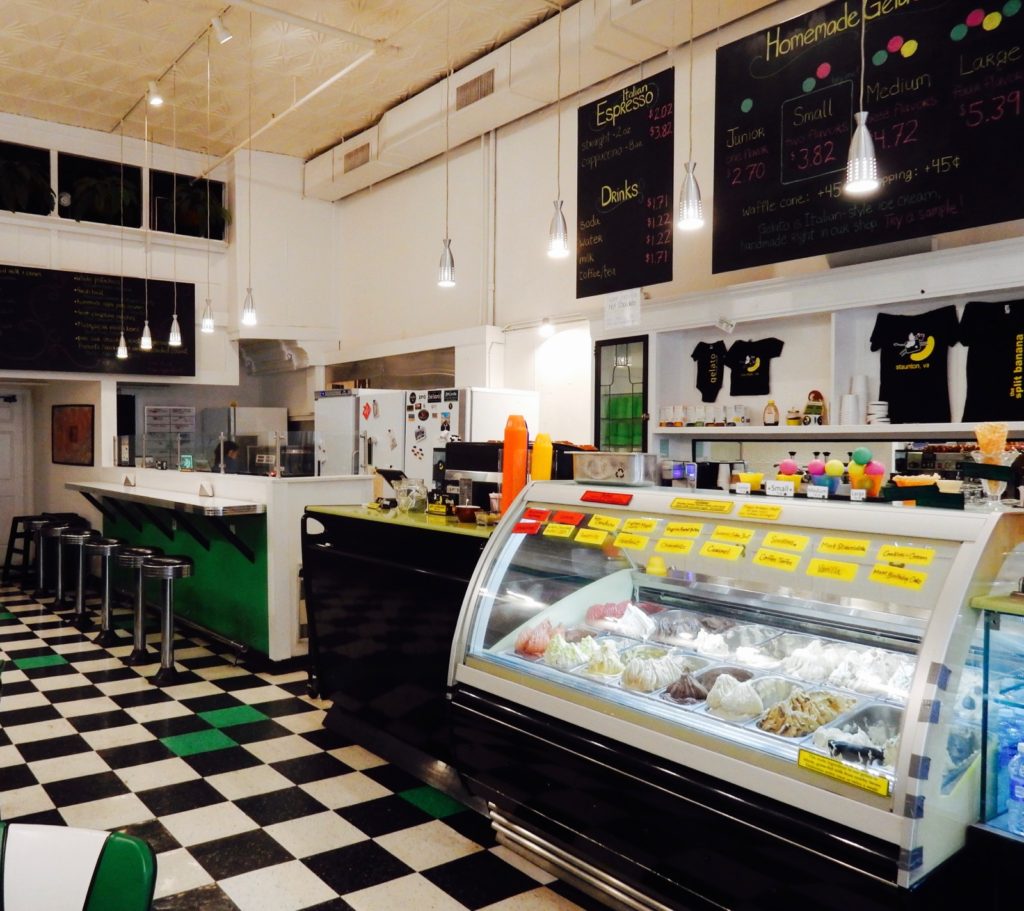
EAT: Locals also recommend in Staunton VA
The Shack – a “not fancy” eatery with a James Beard Finalist chef. Remedy Burger, Mill Street Grill, Byers Street Bistro, Depot Grill and Thai Staunton. Try Yelping Dog for bottles of wine and gourmet grilled cheese. And The Split Banana for “the best gelato you’ll ever have.”
Hotels in Staunton VA
STAY: Hotel 24 South
Want to stay in the best location to visit the Woodrow Wilson Home and Library, tour or see a Shakespeare play at Blackfriars Theater next door, then walk downhill to shop and take in the magnificent architecture? Stay at the Hotel 24 South.
Be assured, this historic brick hotel has much in common with Shakespeare and Staunton’s notable downtown streets, offering packages that include tickets to shows at Blackfriars and other perks.
The whole hotel, first built in 1924, has been refreshed. Amenities abound, including an indoor swimming pool. Guest rooms, which feature photographs of local architecture are upscale-fine for discerning guests who want to stay where the action is.
All articles belong to Getaway Mavens LLC, and all photos belong to us as well, unless otherwise noted. It’s all copyrighted. Please don’t repost anything elsewhere without asking us first. All rights reserved. This site uses cookies to enhance your experience.
We make no guarantees of any price listed on our site. We’re not responsible for content on external websites linked to ours, including linked resources, an external blog post, any partner site, hotel property sites, or affiliate sites. We only write about places we have vetted, but can’t guarantee that your experience will be exactly the same.
Posts may contain affiliate links at no cost to you. Several of our trips are also compensated by the respective tourism boards for the city or state we are visiting. This never impacts how we share the destination with you – opinions are always our own and we pride ourselves on that. We do not sell links or accept unsolicited guest posts under any circumstances. Don’t even ask.
United States Copyright, Getaway Mavens, LLC

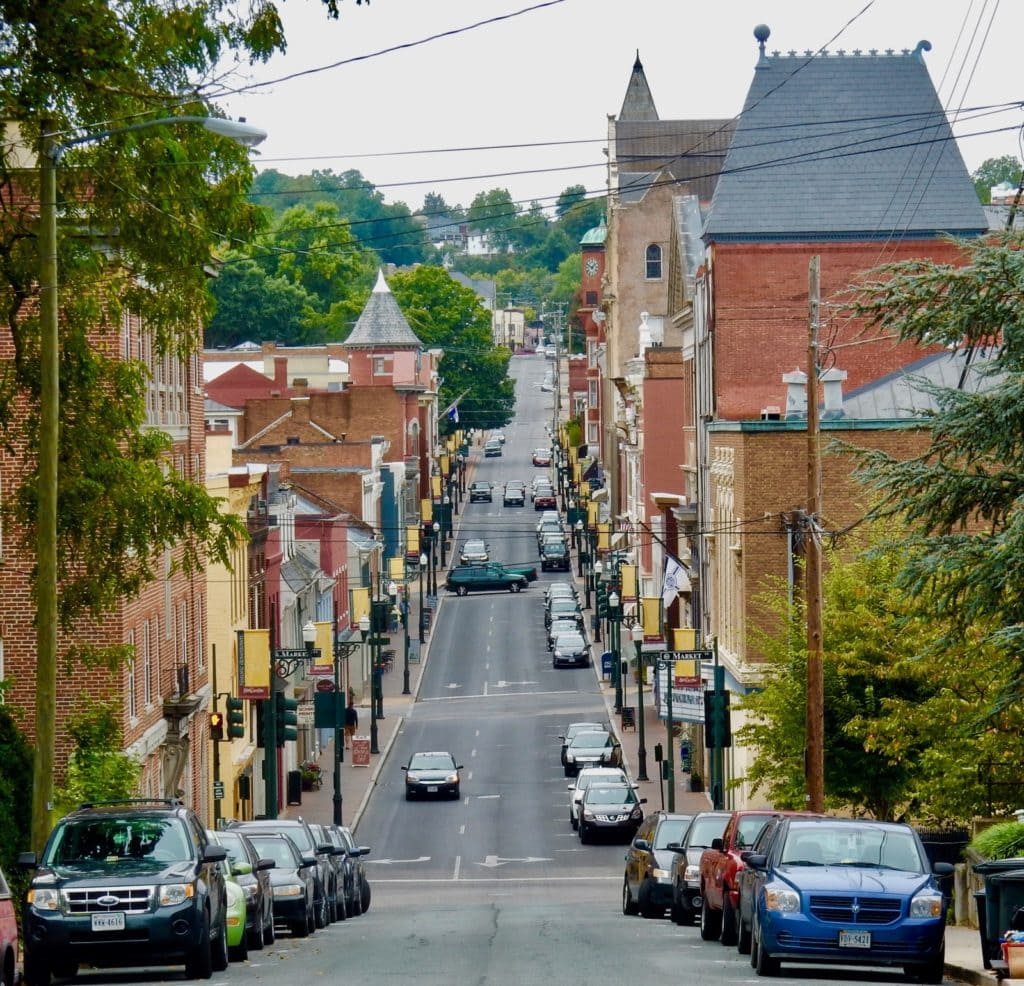
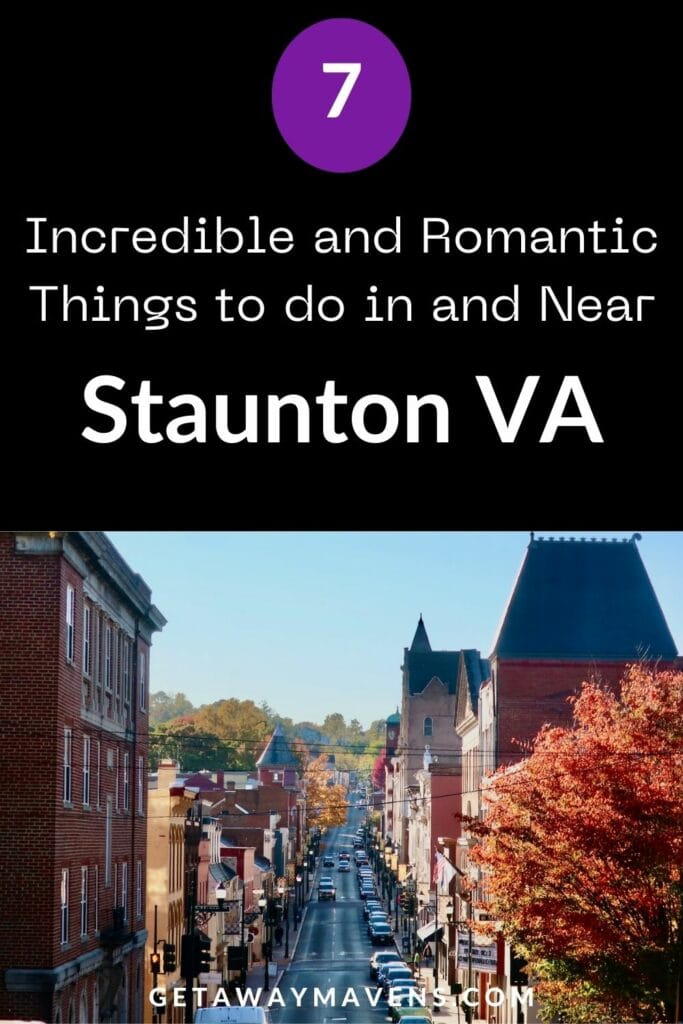
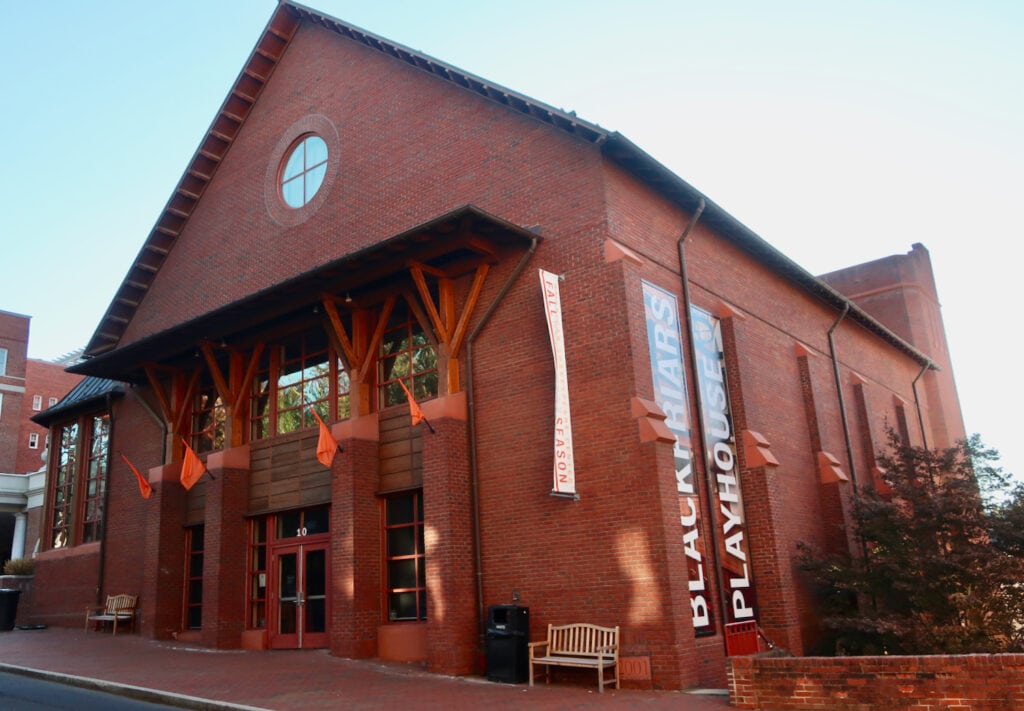

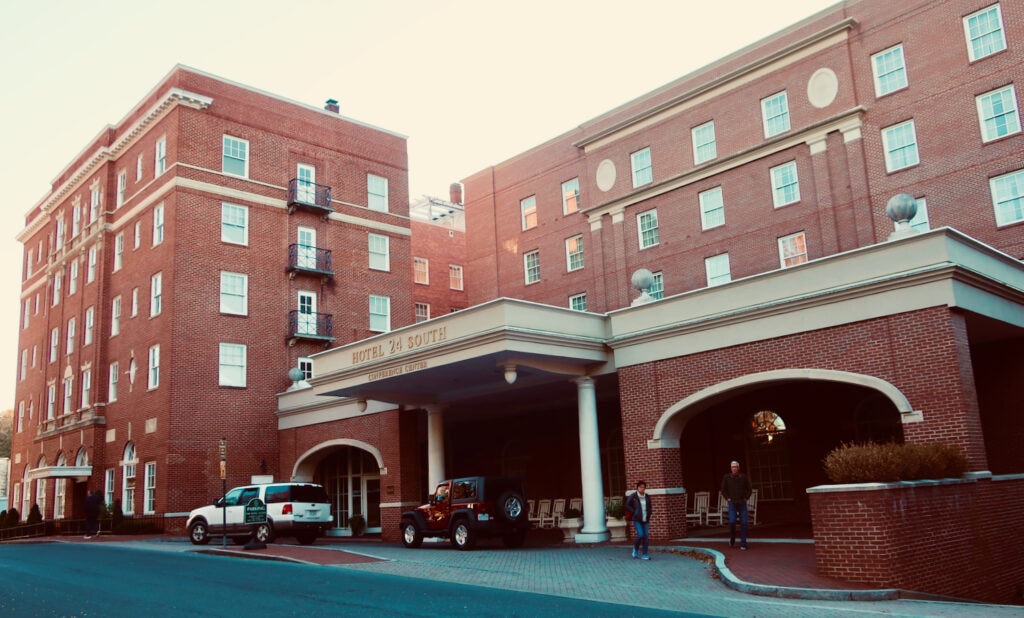

Staunton is an interesting place to visit. Please update the visitor information to include the Anne Hathaway Tea Cottage. We visited there in October and it was a delightful experience, complete with English tea service in a lovely setting. http://www.anne-hathaways-cottage.com/about-the-tea-room/
Please update your information to show that Staunton, Va. Is located in the Shenandoah Valley, in the western, mountain area of Va., NOT central Virginia. Richmond is in central Va., in the Piedmont area. I live in both places, and grew up in Staunton. I think that this is important to let people know, so they don’t get confused about where Staunton is in Va. There is a big difference.
Hi Susan – thanks for pointing that out. I just changed the intro to reflect that Staunton is in the Shenandoah Valley. Thanks so much for reading! Malerie